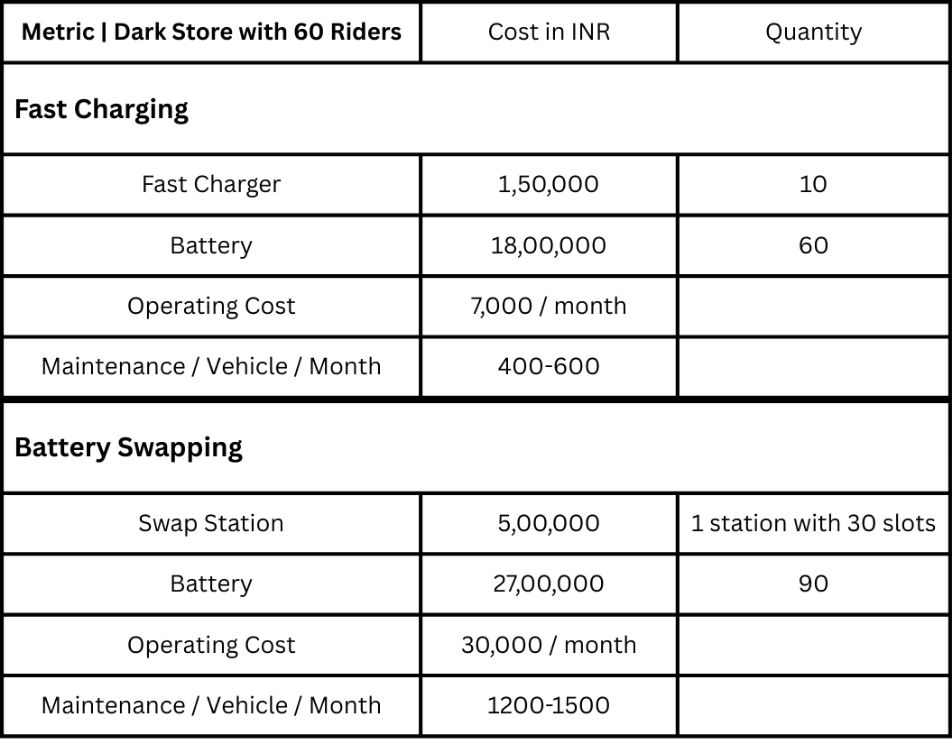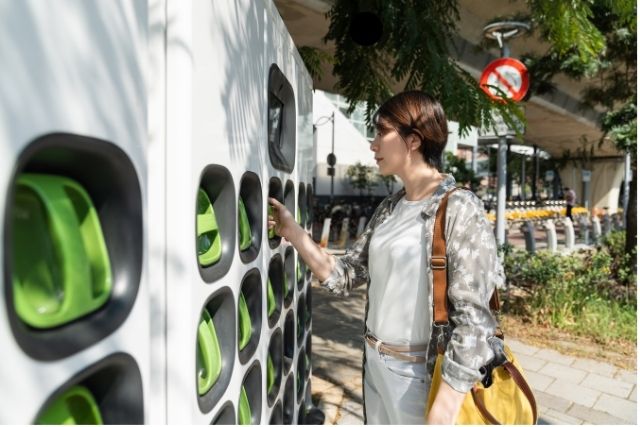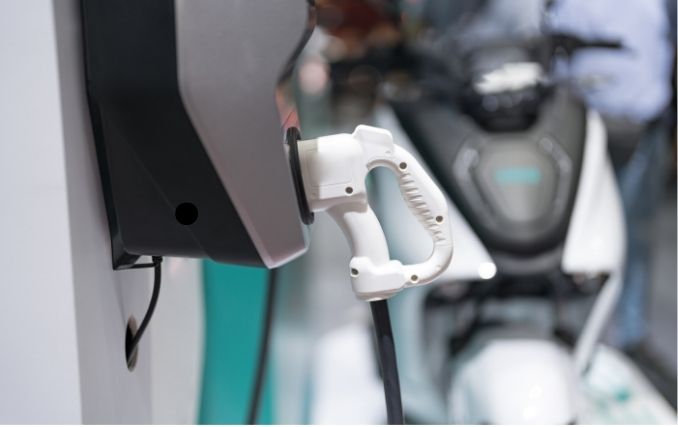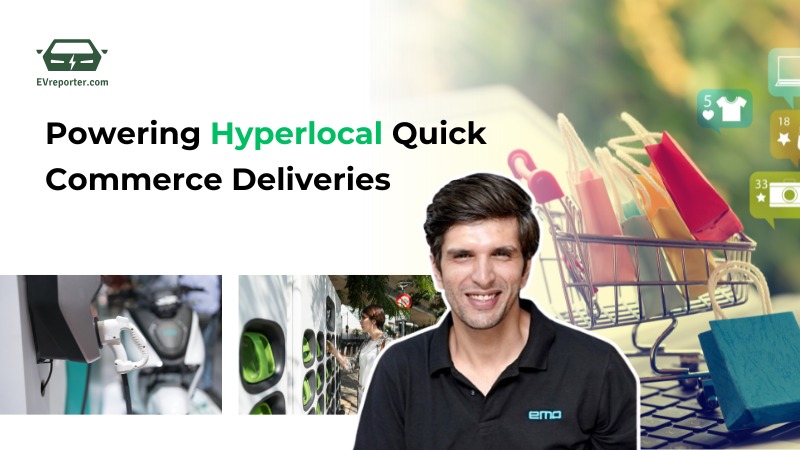Powering Quick Commerce Deliveries | Quick Charging vs Battery Swapping

Quick commerce is all the buzz right now, a phenomenon that has become a daily habit for a large chunk of urban dwellers. EV fleets driving Quick commerce require Quick re-fueling solutions. Sheetanshu Tyagi, Co-founder and CEO, Emo Energy weighs in on the two popular methods, quick charge vs battery swapping.
What challenges do traditional charging methods pose for EV fleets in the quick commerce sector, and what solutions are emerging to minimize downtime and optimise operational efficiency?

Quick commerce thrives on delivering goods within a tight 3-5 km radius, often in less than half an hour.
To make this happen, EV fleets—mostly two- and three-wheelers—need to run for 18-20 hours a day with minimal downtime. Traditional charging, which can take 4-6 hours, is a non-starter. The industry needs solutions that keep vehicles on the road, delivering more orders and boosting profits.
That’s where fast charging and battery swapping come in, each promising to cut downtime and keep the wheels turning.
What are the dynamics, pros or cons of battery swapping for quick commerce?

Battery swapping is as fast as it sounds. In just 2-5 minutes, a depleted battery is swapped for a fully charged one, enabling drivers to get back on the road almost instantly. There are many companies in India that offer this solution, using automated systems or manual stations.
It’s a tempting option for quick commerce, where every minute counts. But it’s not all smooth sailing.
- Swap stations need 30-40% more space than fast-charging hubs, a big issue in metro cities
- Additionally, stations must stock extra batteries—approximately 1.5 for every vehicle—to prevent shortages, thereby tying up money in inventory.
- Setting up a swap station can cost around INR 4 Lakhs for a quick commerce hub, with monthly maintenance from INR 1,200 to 1,500 per vehicle and energy costs of INR 11-13 per kWh.
Why makes you believe that fast charging is more suitable for quick commerce?
Fast charging takes a different tack. Instead of swapping batteries, it juices up an EV’s battery to 50 km in about 20 minutes, as seen with our Zen Pac battery coupled with the SWFT Charger.
- Fast charging stations are smaller—50% less space than swap stations—making them easier to fit into urban hubs.
- Energy efficiency is another plus. Fast charging loses just 5% of energy compared to 15-20% for swapping, resulting in savings on power bills.
- Each 6 kW charger is INR 70,000, including setup. Setting up a 6 kW charger is much easier compared to public fast chargers due to its lower power requirement, and it serves 15-20 riders daily. Maintenance costs INR 400-600 per vehicle per month, and energy costs INR 9-10 per kWh. A 20-minute charging session provides 50 km of range, ideal for 4-5 hours of deliveries. After this, riders can use a 20-minute break for idle time or order pickup to recharge and resume.
An internal study of 500 electric scooters revealed that fast charging enabled 92 deliveries per vehicle daily, compared to 78 for swapping, resulting in an additional annual revenue of INR 1.2-1.5 lakh per vehicle.

Fast chargers at dark stores leverage on-site integration and riders recharge while waiting for orders, reducing idle time away from hubs, whereas battery swap stations are constrained by external placement.
It is curious to note that a typical battery swap station designed to serve 60 riders generally holds only around 30 additional batteries. In high-demand scenarios where more than 30 riders arrive simultaneously, the station can experience significant delays, ranging from 45 minutes to over an hour.
Fast Charging VS Battery Swapping

While the above challenge of delays in a battery swapping set up can be addressed by deploying additional swap stations, it comes with a substantial increase in capital expenditure.
The cost of Infrastructure setup, space rental, and securing an adequate power supply can range between ₹5,00,000 and ₹10,00,000 per swap station.
In contrast, fast charging presents a more scalable and cost-efficient alternative. A set of 10 fast chargers can easily support 60 riders, as each rider typically requires only 15–20 minutes of charging time—often during goods loading or short breaks.
Moreover, if a dark store requires expanded capacity, installing 10 additional fast chargers would cost approximately ₹1,50,000—significantly lower than the cost of deploying a new swap station.
Fast charging’s lower costs come from simpler setups—no robotic arms or extra battery stocks—and longer battery life, with replacements needed every 48-60 months versus 18-24 months for swapping. The numbers for total deliveries and cost for deliveries increases exponentially over the span of a year.
As per our analysis, for a delivery cost of INR 5,00,000, fast charging would power 16,667 deliveries as compared to 10,000 deliveries powered by battery swapping.
What are the real-world experiences and future prospects of battery swapping and fast charging in the quick commerce market in India?

Various Battery Swap Pilots around India show a similar result, while two-minute swaps sound ideal, 35% of drivers face delays during busy times, and uneven demand across stations creates inefficiencies.

On-site fast charging helps streamline operations and boosts delivery numbers. The quick commerce market is projected to grow at a 22.6% CAGR through 2034, necessitating increasingly efficient fleets. While battery swapping offers speed, its higher costs and logistical hurdles make it less practical for scaling up. Fast charging, with its cost savings, smaller footprint, and adaptability, appears to be the smarter bet.
Choosing between fast charging and battery swapping isn’t just about tech—it’s about what keeps deliveries flowing and profits growing. While both have their fans, evidence suggests that fast charging is the go-to option for quick commerce, especially in fast-growing markets like India.
Also read: EMO Energy raises $6.2 million in Series A funding
Subscribe today for free and stay on top of latest developments in EV domain.






